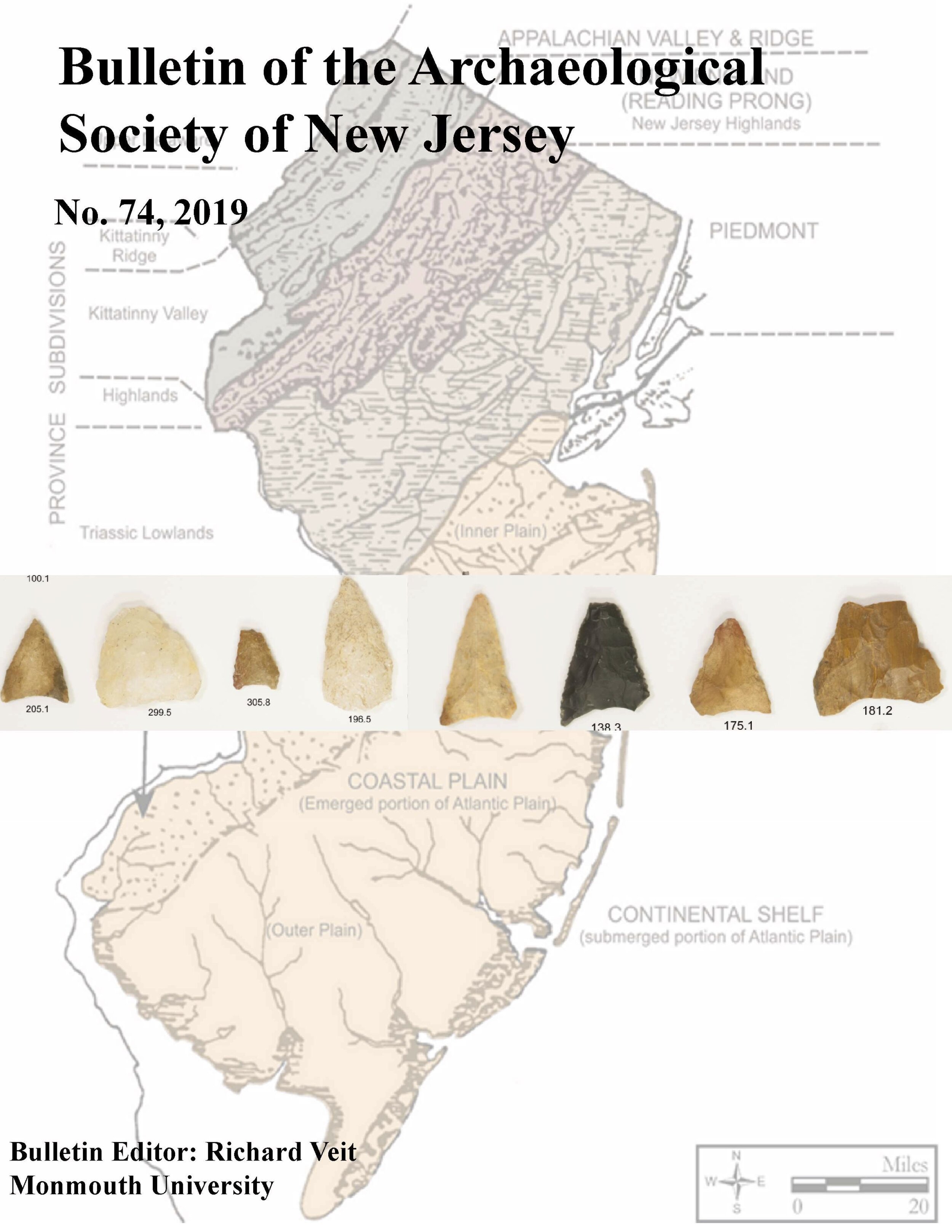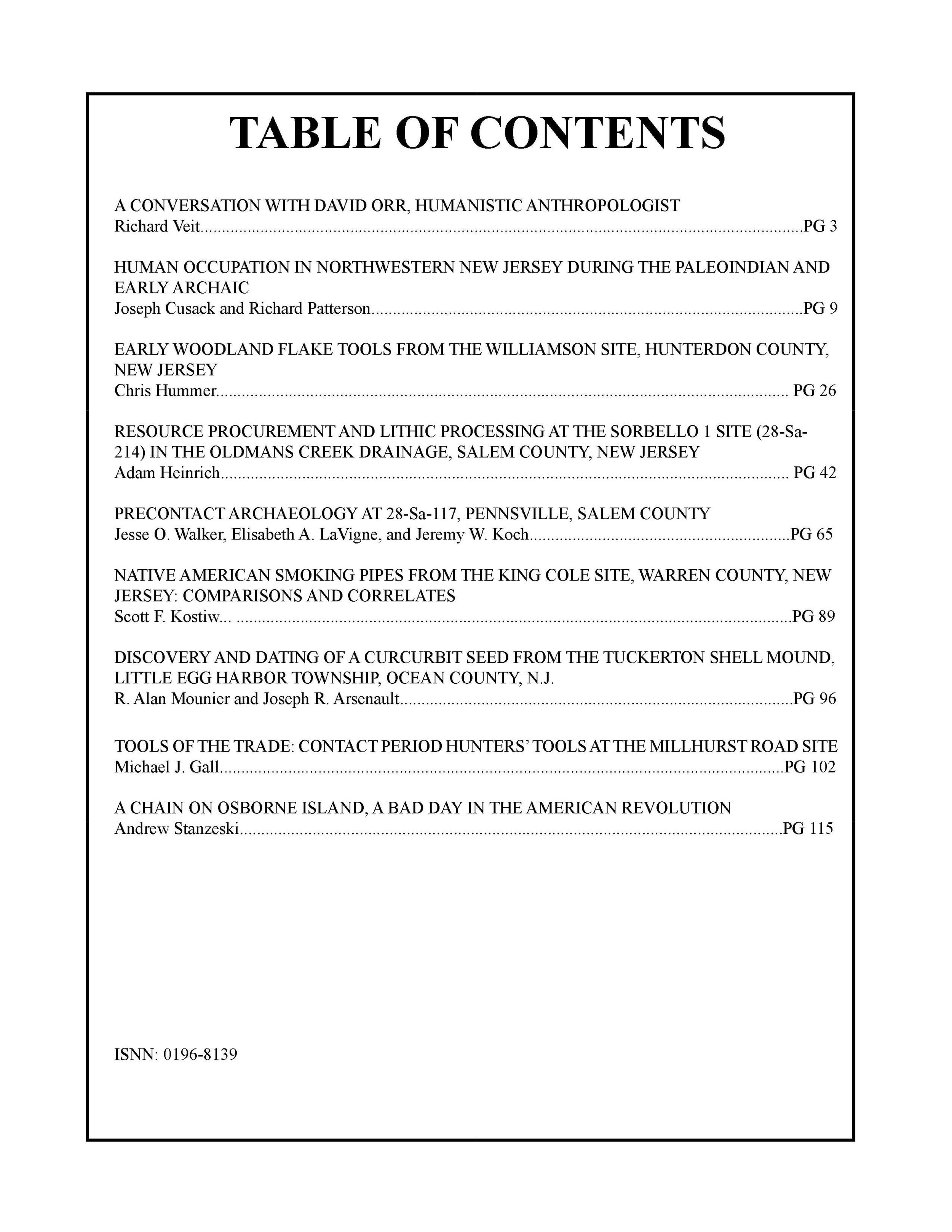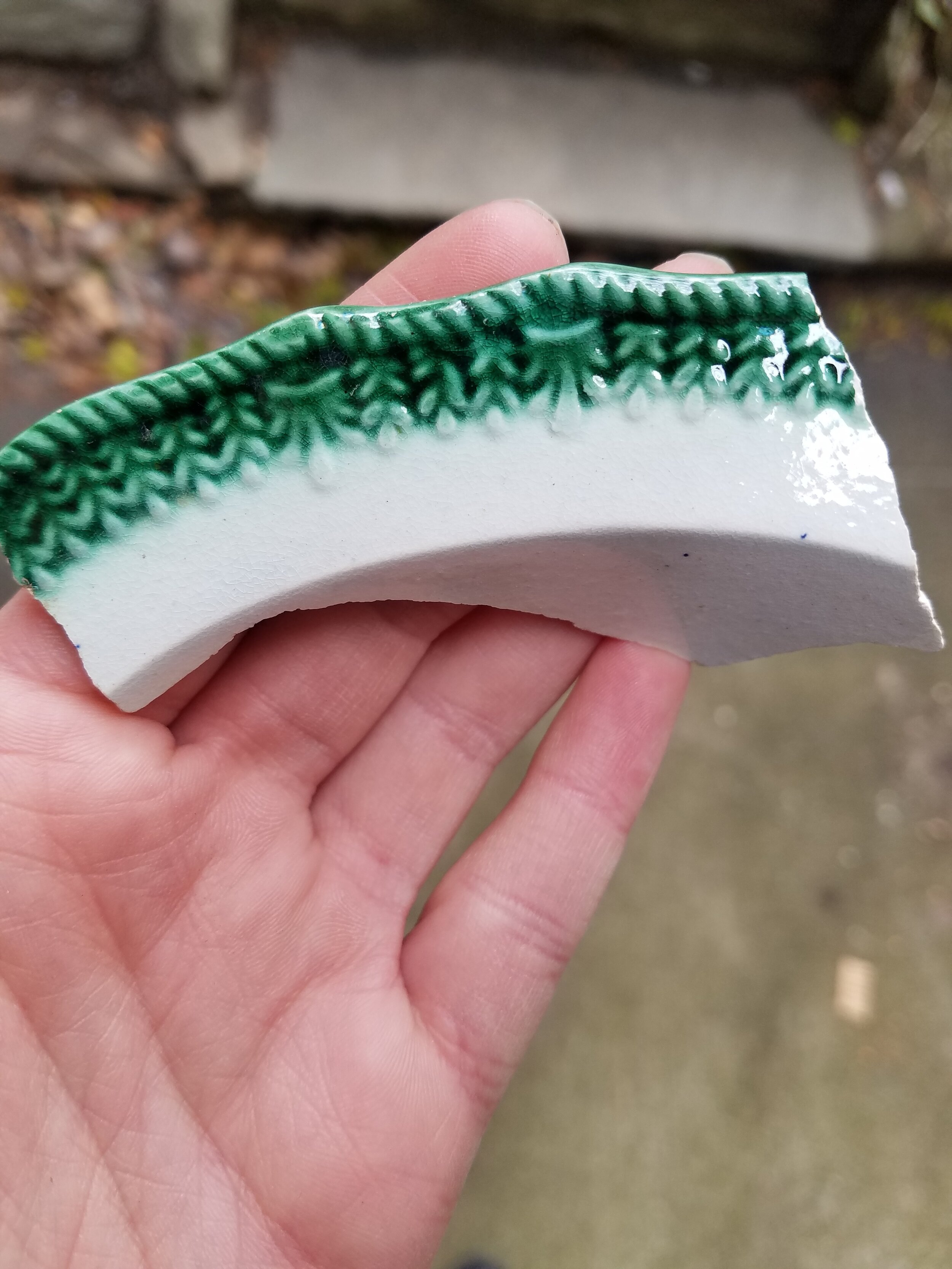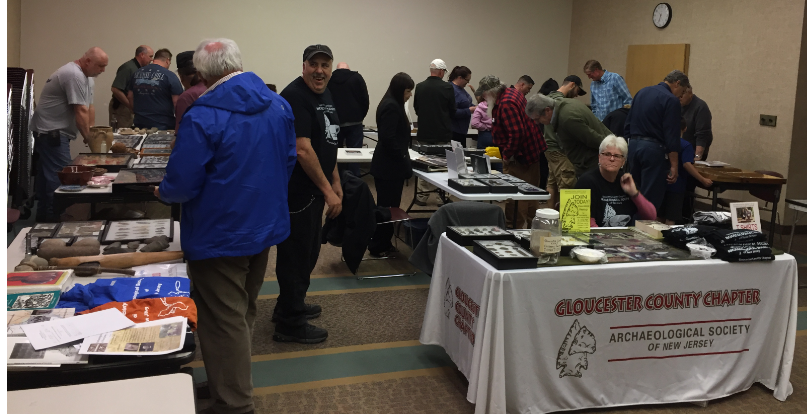Out of an abundance of concern for the disenfranchisement of African Americans in the United States, the ASNJ has begun a process to re-evaluate its long-term programming and outreach, find ways to better serve diverse communities in New Jersey, and provide a more inclusive environment for disparate voices and opinions to be heard regarding the archaeology of the state’s past. Diversity is essential to ensure the field of archaeology incorporates and considers varied approaches and viewpoints shaped by individual experiences. As archaeologists, we can serve as social activists and are given an ability to help correct inaccurate, revisionist histories and offer a greater voice to individuals and communities historically relegated as “other”. Through archaeology and community involvement, we can create greater inclusivity and provide communities with an avenue to learn about and celebrate diverse cultural heritages. The ASNJ is setting goals to expand its outreach to and involve more ethnically diverse communities through its annual public archaeological studies, speaking with underserved schools to promote archaeology, and developing symposiums that highlight historical experiences of disenfranchised New Jersey communities. We have also begun discussions to form a new research grant to promote scholarly studies on African American cultural history and archaeological contributions in New Jersey. We look forward to striving toward these important goals.
Artifacts in Focus: Redware Vessels (May 27, 2020)
These redware vessels were recovered from sub-floor deposits in a c. 1690-1720s dwelling/slave quarter/out-kitchen in Burlington County. The building was the first home at the site to the affluent Quaker Restore Lippincott family from about 1690 to 1700 when a second larger dwelling was built leaving the first building to serve as a slave quarters and out-kitchen. This building also contained the engraved bone needle case features on January 22, 2020. The right vessel is a portion of an Essex Post-medieval Fine Redware storage pot with a light lead glazed and thumb-impressed decorated exterior. This ware dates to the early to mid-seventeenth century.
The right vessel is a small collared bowl, a vessel style common on sixteenth to early eighteenth-century sites in England and early colonial areas. The interior decoration includes slip-trailed rings and a bird design at its center. Oxidized copper or brass filings added some green color to the decoration. The bird could represent a phoenix or peacock. Peacocks, while they didn't seem to be tasty, were features on estates and they were occasional foods for affluent people due to the novelty or exclusivity of the bird. The two redware vessels speak to the age of the site and the owner's connection to England.
📸: Allison Gall
📩: Adam Heinrich and Danielle Cathcart
Artifacts in Focus: Full Grooved Axe and Abrader (May 20, 2020)
As some of you may have read in our newsletter, Alex Gonzales, graphics specialist and videographer, has kindly shared some of his artifact collection with us! Featured in breathtaking clarity, he has sent us photos of some beautiful prehistoric pieces including this full-grooved axe found on the Jacob Wills Farm in Evesham, New Jersey. While the Jacob Wills House still stands and is on the National Register of Historic Places, some of the surrounding property has been developed and no longer survives for archaeological exploration. All that remains of the prehistory of the site are a collection of artifacts to be shared and learned from.
Full-grooved axes were made using ground stone technology, where stone was pecked and ground in order to form a desired shape, rather than flaked apart (in the way that projectile points were created). They would then have been hafted to a wooden handle. Abraders are coarse stones that would have been used to smooth other stones.
Artifacts in Focus: Nails (May 12, 2020)
Missing the field? We all are! But a keen eye around your home in the city or elsewhere offers evidence on when structures were built and previous occupants. Nails are produced by hand and change styles many times before becoming manufactured by machine. They are a great indicator of chronology.
📸: George Leader
ASNJ Online Speaker Series: Presentation on Saturday May 16, 2020
UPDATE
For those of you who missed Richard Veit's wonderful presentation "Fever!: The History and Archaeology of the Philadelphia Lazaretto, Quarantine Hospital and Precursor to Ellis Island", in which he discussed the archaeology and history of Philadelphia's Lazaretto, used to quarantine Philadelphians and visitors who contracted the Yellow Fever during the late 18th century through the 19th century, you can now watch it below.
Please also subscribe to the society's YouTube channel at: ASNJ YouTube Account Link
We'll be uploading more content all summer as we continue to add speakers to our Online Speaker Series.
Join us! ASNJ Online Speaker Series on Zoom. It's Free! (Limited to 100 people)
When: Saturday, May 16th at 7:00 pm Eastern
How: Email ASNJ.Presentations@gmail.com for a Zoom Meeting ID and Password
Who: Dr. Richard Veit, Monmouth University, Department of History and Anthropology (Presenter)
What: Fever!: The History and Archaeology of the Philadelphia Lazaretto, Quarantine Hospital and Precursor to Ellis Island
Join the ASNJ next Saturday (May 16) for our Online Speaker Series on Zoom. Presenter Dr. Richard Veit will discuss the History and Archaeology of the Philadelphia Lazaretto!
The Philadelphia Lazaretto, located on the Delaware River in Essington, Pennsylvania, is the oldest surviving lazaretto or quarantine station in North America. A precursor to Ellis Island, it welcomed new immigrants to Philadelphia for over a century. It also is a physical reminder of the horrific impact that yellow fever, an acute viral disease spread by the Aedis Aegypti mosquito, had on society in early America. Construction of the grand Georgian edifice began in 1799, in response to the Yellow Fever Epidemic of 1793. That epidemic killed 5,000 of Philadelphia's inhabitants; nearly ten percent of the city's population. The Lazaretto was one of several public health initiatives undertaken by the Philadelphia city government in an attempt to prevent further outbreaks of disease. In 2015, Monmouth University began a long-term archaeological investigation of the site. Fieldwork is providing new information about the physical layout of the Lazaretto complex and has identified artifact deposits with the potential to provide new information about the lives of the individuals who lived and worked at the site. The Lazaretto is a powerful reminder of how human relationships with other living things, in this case, mosquitoes and the viruses they carry, have shaped and continue to shape society.
This is an online livestream video presentation through Zoom on your computer or mobile device. To attend, simply download Zoom via your mobile App Store or via http://www.zoom.us.
Please email ASNJ.Presentations@gmail.com for a Meeting ID # and Password # to join the presentation.
Attendance is limited to the first 100 people. If you are unable to make the meeting, please do not fret. The presentation will be uploaded to the ASNJ's YouTube Channel (link: Online Speaker Series). All attendees will be muted and questions can be posed to the presenter through the chat feature.
Introducing the ASNJ Online Speaker Series, Starting this Sunday (April 26, 2020)!
UPDATE
For those of you who missed Mark Nonestied's wonderful presentation "Uncovering Middlesex County History", in which he discussed the impact of the 1918 influenza pandemic on central New Jersey, you can now watch it below.
Please also subscribe to the society's YouTube channel at: ASNJ YouTube Account Link
We'll be uploading more content all summer as we continue to add speakers to our Online Speaker Series.
Join us! ASNJ Online Speaker Series on Zoom. It's Free! (Limited to 100 people)
When: Sunday, April 26th, 5:00 pm Eastern
How: Email ASNJ.Presentations@gmail.com for a Zoom Meeting ID and Password
Who: Mark Nonestied (Presenter)
What: Uncovering Middlesex County History: Discovering Victims of the 1918 Influenza Pandemic at Washington Monumental Cemetery
Join the ASNJ this Sunday for our Online Speaker Series on Zoom. Presenter Mark Nonestied will discuss the impact of the Spanish Influenza on Middlesex County, New Jersey in 1918. Mr. Nonestied combed through historic records and photographs, and used Ground Penetrating Radar to explore how the influenza affected Central New Jersey 102 years ago.
This is an online livestream video presentation through Zoom on your computer or mobile device. To attend, simply download Zoom via your mobile App Store or via http://www.zoom.us.
Please email ASNJ.Presentations@gmail.com for a Meeting ID # and Password # to join the presentation.
Recorded presentations will be made available on YouTube at a later date.
ATTENTION: Introduction of ASNJ Online Speaker Series/May 2020 Quarterly Meeting Cancelled
Due to the Covid-19 Pandemic, the ASNJ was forced to cancel its March and May meetings in an effort to ensure social distancing and ensure the safety of its members.
To keep our members engaged, the Society has moved presentations to an online platform on Zoom.
The Society aims to provide new content on a bi-weekly or monthly basis through its ASNJ Online Speaker Series. Presentations will occur on Sundays at 5:00 pm Eastern Time.
The first presentation is Sunday (April 26th) at 5:00 pm (Eastern), featuring:
Presenter: Mark Nonestied, Division Head-Historic Sites and History Services at the Middlesex County Office of Arts and History
Title: Uncovering Middlesex County History: Discovering Victims of the 1918 Influenza Pandemic at Washington Monumental Cemetery.
This is a 25 minute presentation followed by a short question and answer period.
To attend the meeting, please send an email to ASNJ.Presentations@gmail.com. You will receive an autoreply with the Zoom Meeting ID # and Password #. You must enter both to join the meeting.
Attendance is limited to the fist 100 people. If you are unable to make the meeting, please do not worry. The presentation will be uploaded to the ASNJ's YouTube Channel and on our website in the days to come. All attendees will be muted and questions can be posed to the presenter through the chat feature.
Access to Zoom is easy, you can download it to your desktop or laptop computer by visiting http://www.zoom.us or by visiting the App Store on your Mobile device and creating a free account.
The ASNJ aims to continue this Online Speaker Series biweekly or monthly and will post about new meetings through social media, website, and email communications.
Artifacts in Focus: Anchor Cuff Links (April 22, 2020)
This pair of cuff links that contain a stamp anchor design were found at the White Hill Mansion site in Fieldsboro, Burlington County, NJ. They were recovered in 2014 during Monmouth University's archaeological survey of the 18th-century property, which contains a large patterned brick mansion, typical of those erected in the Delaware Valley. The cuff links have been owned by Robert Field, a merchant, who was likely responsible for erecting the mansion in the mid-18th century. Robert died on the eve of the American Revolution, leaving his wife, Mary a widow. Alternatively, the cuff links may have been owned by Mary's second husband, Captain Thomas Read, the first Commodore of the Continental Navy. Read resided at White Hill until his death in 1788, again leaving Mary a widow, responsible for ensuring her son, Robert, and daughter, Mary, married into a wealthy family. That year, younger Mary wed Richard Stockton, son of the Richard Stockton who signed the Declaration of Independence. Young Robert Field wed Abigail Stockton. The Stockton family owned a large estate, known as Morven, in Princeton, which stands to present day. The marriages solidified the Field family's economic survival and political relevance.
📸: Michael Gall
Artifacts in Focus: Stoneware with Watchspring Motif (April 15, 2020)
These sherds from the ASNJ’s Dunham House excavations are excellent examples of American stoneware. This distinctive type of stoneware originated during the eighteenth century in the American colonies, and it was composed of a generally gray or brown-colored body with blue painted or incised decorations and a salt-glaze finish. This form evolved from German traditions when multiple potters emigrated to the New World during the early 1700s and established local potteries, producing ceramics with familiar styles for a new market. New Jersey has a rich history of local ceramic production, and was one of the greatest producers of American stoneware.
One of the most important and influential potteries in 18th century America was established by the Morgan family in Cheesequake (located in modern-day Old Bridge, NJ). Morgan stoneware was often decorated with a distinctive “watchspring” motif, a brushed-on blue spiral design. These sherds from the Dunham House demonstrate this distinctive Morgan design and are great examples of New Jersey’s significant role in the early pottery industry.
📸: Sadie Dasovich
📩: Richard Adamczyk
Artifacts in Focus: Transfer Print Ironstone (April 8, 2020)
This ironstone mug fragment was recovered from a stream in Middletown, New Jersey. The stream is adjacent to the historic Middletown Village, which is home to many homes dating to the early 18th century, in addition to one bicentennial house situated about a quarter mile upstream. Ironstone, which was primarily produced from the mid 19th to the mid 20th century, was often decorated with molded designs such as the paneled foliage motif seen in this piece. Foliage motifs were most popular in the 1850s and 1860s.
With a background in botany, the finder of this fragment sees a resemblance between the foliage depicted on this mug and the native plant Uvularia (or Merrybells), which can be seen in Tatum County Park! What do you think? Is it possible that this mug was used by a member of one of the nearby households in the 19th century?
📸: Kyle Clayton
Artifacts in Focus: Dunham House Assemblage (April 1, 2020)
More from the ASNJ’s Dunham House archaeological excavation last summer! This is a selection of artifacts that date from the 18th century and are associated with the Samuel Barron household from 1750-1801.
They include (top row) two buckles, a pin, a bone fan blade for a lady's hand fan, a knife, a chisel, a fragment of Morgan Pottery stoneware with a watch spring motif and a tobacco pipe stem; (bottom row) North Midlands hollowware, white salt glazed stoneware plate, dipped white salted glazed stoneware mug, porcelain with landscape motif, manganese mottled mug, and tin glazed earthenware plate.
The assemblage represents a mix of imported goods and locally produced ceramics. Items like the fan blade, also highlight a household of wealth. Pins, like the one in the image, were used to fasten clothing and paper together and represented the 18th-century equivalent of the modern-day paper clip and velcro. Buckles, like the two in the image, were abound in the 18th century and used to fasten pants, shoes, stockings, leather straps, satchels, luggage, etc.
📸: Michael Gall
Artifacts in Focus: LeCroy Projectile Point (March 25, 2020)
This is one of Hopewell Museum's oldest objects. It is called a LeCroy projectile point. This one is made of a roseate quartz and is probably about 8000 years old.
“The LeCroy blade was named by Madeline Kneberg in 1956 for examples found on the LeCroy Site near the Tennessee River in Hamilton County, TN. The location, itself, was named for the modern finder of this ancient site, Archie LeCroy. The LeCroy is the most famous of the bifurcated blade family but it certainly is not the only one – in fact it is somewhat late in the ancestral line of this artifact type. There have been some successful stratigraphic excavations of bifurcated blades thus giving us chronological evidence of the ages of the various types in this family and how to correctly align their successions. The classification of these blades as bifurcates is because their stems are split or divided on the basal edge – thus bifurcated. These blades are now believed to have been used mostly as knives because their basally notched stems would have been very effective knife hafting areas and because many, if not most, bifurcates have been sharpened and re-sharpened, as cutting tools, down to the short nubby and expended sizes that we generally find today. Many bifurcates have serrated blade edges and it is believed that serrations were used mainly on re-sharpened knives since it would have given the tools saw-tooth sides and greatly increased the cutting abilities. Some, though, most likely would have been used only as dart or small spear points.”
You can learn more about this type of point at http://www.jimmausartifacts.com/to-lecroy-or-not-to-lecroy/.
📸: Ian Burrow
ASNJ Bulletin Update and Membership Renewal Form
Dear ASNJ Member,
The ASNJ appreciates your continued interest and support of our programs, publications, lectures, and outings. The ASNJ's Bulletin No 74 has been printed and is at Monmouth University. It is through your continued support and membership that the ASNJ remains economically viable and can continue its educational programing.
It is with great disappointment that Bulletin No. 74 cannot be shipped at this time due to the temporary closure of Monmouth University during the COVID-19 pandemic. The University will remain closed until further notice. Once the University reopens and staff is permitted to return to campus, the bulletins will be mailed out to all 2019 members. The 2019 Bulletin features nine information-packed articles with data from the Paleoindian period to the Revolutionary War, and also includes an an interview with an outstanding archaeologist.
The ASNJ's Bulletin Editor, Richard Veit, Ph.D., has enough copy for a full 2020 Bulletin and submitted articles are currently being reviewed and edited. He has tirelessly worked to put together the most recent Bulletin, a great addition to the varied program of archaeological and educational outreach provided by the society. Please email Richard Veit at rveit@monmouth.edu if you'd like to provide content for future Bulletins.
Sincerely,
Michael J. Gall
ASNJ President
*** IMPORTANT REMINDER ***
The ASNJ would also like to provide a reminder that, if you haven't done so already, 2020 renewal membership can be made in two ways.
You can quickly and easily renew on our website at:
https://www.asnj.org/asnj-membership
or
if you prefer to mail in your membership form, please click here to download the form, print and fill out the form, make out a check payable to the Archaeological Society of New Jersey, and mail the form and check to:
ASNJ
c/o Jesse Walker
320 Brook St
Bristol, PA 19007
Artifacts in Focus: Pearlware Plate Rim (March 18, 2020)
This Pearlware plate rim fragment was discovered in a box of artifacts from an old collection that is being rehoused. Pearlware can sometimes be difficult to identify, but this piece offered us some nice hints with its generally blue-toned color and blue specks observable in the glaze, which are two strong pieces of evidence for its identification!
This particular piece is believed to have been produced sometime in the 1820s or 1830s, based on the presence of the embossed foliage motif around the rim, a popular decorative style in that period. Old collections can sometimes prove to be illusive in terms of provenience, as the paperwork associated with them is often missing or has not been read in so long that a bit of contextual untangling must be performed before conclusions can be drawn! With time, we will understand the story of this little fragment better. 😊
If you have found yourself with some new time on your hands, you can learn more about collections management here: https://www.nps.gov/orgs/1802/collections_mgt.htm.
📸: Alexis Alemy
Artifacts in Focus: Debased Westerwald (March 11, 2020)
This probable tankard fragment was recovered from the Buried A horizon of an archaeological excavation. Buried A soil horizons may be indicative of a buried living surface (one on which historic people might have walked!) in archaeological terms, and sometimes contain within them dateable and unexpected artifacts! You can learn more about buried soil horizons here: https://www.sassa.org.uk/index.php/Tutorial:Buried_Soils.
This grey-bodied salt glazed stoneware fragment is stylized similarly to German Westerwald stonewares, but lacks the quality typically expected from them. It is believed to be a fragment of what is known as “debased” Westerwald, identifiable by its comparatively crude hand-painted design and generally poorer quality. Likely locally produced, the production of this fragment may range from about 1714 to 1760.
📸: Michael Brown
ATTENTION: March 2020 Quarterly Meeting Cancelled
Archaeological Society of New Jersey March Meeting Cancelled
The ASNJ is cancelling our March 2020 meeting scheduled for this Saturday, March 14th, due to TCNJ’s request to limit gatherings on school property in the wake of the corona virus threat. We are eager to find ways to reschedule the meeting for a later date. We will keep members apprised of the reschedule date once it is determined.
Thank you!
ATTENTION: 2020 Middle Atlantic Archaeological Conference (MAAC) Cancelled
Dear MAAC Membership,
After much deliberation and discussion it is with profound sadness that the Executive Board has voted to cancel this year’s MAAC. We have been contacted by numerous members who have said that they or their company or university have cancelled all travel for employees, faculty and students. I have even been told not to travel to any conferences. The Board feels that this will only increase daily and that we would rather have a well-attended, stress-free conference, than not.
In the coming days the Board will be working on refunding everyone’s meeting registration fees. You will be receiving an email telling you how the refund will happen. All members will be contacted about this decision and it will also be posted on social media and the MAAC website.
The Board will also be discussing whether to reschedule the conference later in the year. I hope all of you understand that this decision was based on the health and wellbeing of all of our membership.
Gregory D. Lattanzi
MAAC President
Artifacts in Focus: Transfer Print Ironstone (March 4, 2020)
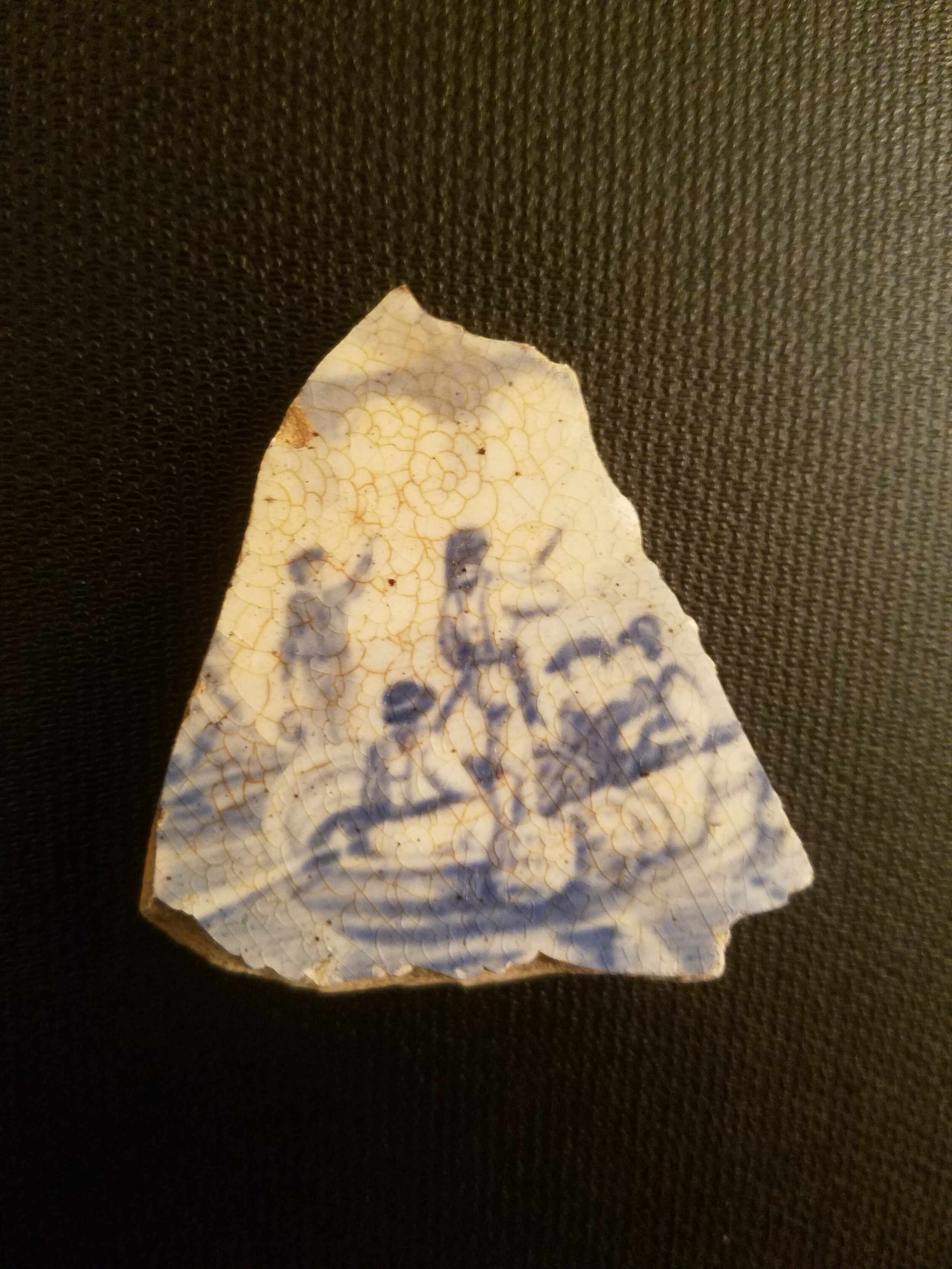

Ironstone isn’t likely to rock the boat on an archaeological excavation as it is a relatively common find ranging in production from about the mid-19th to the mid-20th century. This Ironstone bowl base fragment broke in all the right places, however, revealing a charming boat scene - perhaps one that is reminiscent of the Lewis and Clark expedition. What do you think??
Ironstone, a durable refined earthenware, is often dated based on its decorative style and color, as certain motifs and colors were more heavily produced within a particular range of time. This example is transfer printed in light blue, placing its production within the approximate range of 1840 to 1867.
Its period of use, however, is largely dependent upon the archaeological context in which it was found, which might indicate that it was used much later than that. Unfortunately, this piece was displaced and its actual period of use is unknown.
You can learn more about archaeological methods of dating (no dinner required!) here: https://www.thecanadianencyclopedia.ca/en/article/dating-in-archaeology?fbclid=IwAR16mVoB71IIBGGZN3eaasCnApSNRAW1qhGGZuZveWO-8cgCjUKHy_eeOGw
📸: Alexis Alemy
Gloucester County Chapter: May 2020 Artifact Show
Join the Gloucester C. Chapter of the ASNJ at the 23nd Annual Artifact Show
Wednesday May 6 from 6pm-8:45pm
West Deptford Public Library
420 Crown Point Rd
Thorofare, NJ 08086
Open to the public: Free admission
Image taken during the 22nd Annual Artifact Show (May 2019)
Artifacts in Focus: Personal Artifact Collection (February 26, 2020)
This assemblage of artifacts is part of the personal collection of the Mydlowski family, mostly found during the 1960s in Mercer County. The prehistoric artifacts in this image range from the Early Archaic through the Late Woodland periods and are made from a range of materials including argillite, chert, Cuesta quartzite and jasper. Mostly projectile points, the collection also includes drills and a hammerstone. When this assemblage was analyzed in 2013 during the graduate work of Evan Mydlowski, some items were determined to be non-cultural. Two other items in the collection are historic, including the gun powder horn and the hatchet/hand axe blade.
This collection, generously shared with us today, includes many more artifacts than are pictured here. It also includes a variety of flakes and other stone tools that are not usually deemed “display worthy”. It is the hope of Evan that these artifacts will also be analyzed and cataloged in the future.
If you have any interpretations of the artifacts in this assemblage to offer, please let us know! History and archaeology are an ongoing process; one that is improved by the shared knowledge of those who engage with it.
📸: Evan Mydlowski

















